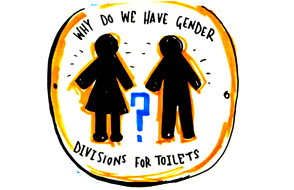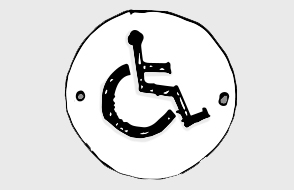Cafes often have a limited amount of floor area and therefore individual toilet units need to meet the requirements of different users.

Cafe Toilets
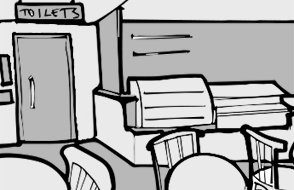
Providing sufficient storage beyond toilet spaces

Disabled toilets are often used as temporary storage solutions, and thus they are no longer accessible. Avoid this by maximising storage opportunities elsewhere in the building in the early stages of the building design process.
Baby Changer
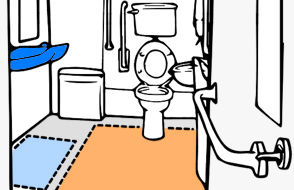
Baby changing facilites provided in disabled toilets should not impede on the area requirements for wheelchair users.
«
»
«
»
Include shelves, hooks and crutch/cane containers

Not everybody sits down to use the toilet, and without a shelf, users with colostomy bags have to put them on the toilet floor. Other fittings, including hooks and crutch/cane containers, can provide a hygienic and convenient aid for users.
Making doors and locks easy to use

In order to make toilets accessible to all, the weight of doors and the pace at which they close are important considerations. If doors are too heavy or swing too quickly some people find it difficult to get in and out of the toilet. Toilet locks should also be easy to use for people of all ages and abilities.
Avoiding ultra-violet lighting

Ultra-violet lights can make it difficult for partially sighted people, those with epilepsy and/or other sensory sensitivities to differentiate between and make use of facilities in the toilet. It is important to avoid the use of UV lighting where possible.
Space for those who support toilet users

Many people need support from carers or personal assistants to use toilets, including children, some older people and disabled people. Disabled toilets need to be big enough to accommodate more than one person for these purposes.
Ensure that sinks are of a practical size
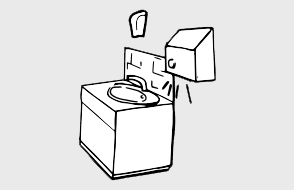
If space is available then a large rather than small sink is preferable to many people. People can use toilet sinks to fill up water bowls for assistant dogs, for example. It is important, however, that the sink does not impede access.
Making toilet spaces safe

Alarm cords should be available in disabled toilets. Consider positioning the cord near the toilet and within reach for all disabled people, including wheelchair users, but not in a place where it could get tangled up in wheelchairs and other equipment.
Adequate provision within spatial constraints
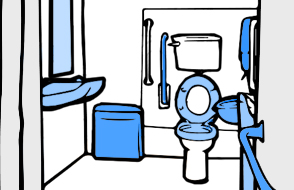
The floor area available in cafe spaces can be limited. However, gender neutral, family friendly and accessible facilities can be achieved through private toilet units offering a range of facilities inside offering access for many people.

